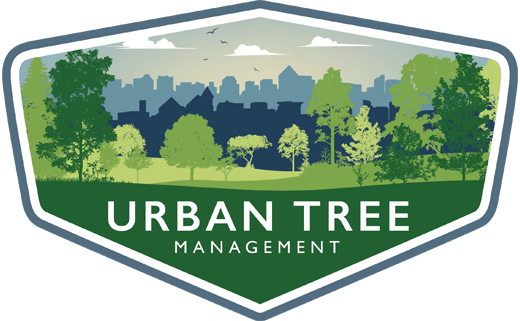Frequently asked questions
We provide a wide range of professional services to meet your project.
Advice & resoruces
Answers to some of the most common questions we get asked:
-
What is a tree consultant ?
Tree Consultants, Arboricultural Consultants, Arboricultural Surveyors, Tree Surveyors and Arboriculturists are capable to conduct arboricultural surveys and have the relevant working knowledge and skills to provide high-quality tree reports.
A tree (arboricultural) consultant is someone who has gained recognised qualifications and expertise in the care and management of trees - particularly trees in landscape and amenity features, in gardens and parks or other populated settings where they are for the enjoyment and benefit of the public.
-
Are you fully insured?
We carry all the necessary insurance in order to practice arboricultural consultancy. Public Liability and Professional Indemnity cover.
-
Do Urban Tree Management undertake tree surgery?
No, we do not undertake in-house tree surgery as we believe this demonstrates an impartial and unbiased assessment, with only the best interests of the client and subject trees at the heart of all recommendations.
-
I’m concerned about the health and safety of my trees, what can I do?
A Visual Tree Assessment (VTA) carried out by our qualified Consultant can offer peace of mind for your trees. The tree will be visually assessed for signs of any structural defects using the Visual Tree Assessment methodology, and a schedule will be provided detailing the condition, structural defects and any works required to bring the tree into a safe condition.
-
I am looking at developing my land for new homes, can you advise on what trees I can remove?
Yes, an Arboricultural Impact Assessment (AIA) will evaluate the direct and indirect impacts of a proposed development and consider factors including; ground constraints, amenity value, the construction of the development, infrastructure requirements, tree retention/ removal plans, amongst others
-
How close can i build to my tree ?
If the building work proposed requires planning consent, all trees that could potentially be affected by the development (including those off-site) should be assessed by an arboricultural consultant in accordance with British Standard BS5837:2012 Trees in relation to design, demolition and construction – Recommendations, and details of this submitted to the Local Planning Authority with the planning application. This assessment will consider tree condition, dimensions, likely retention span (years), and future growth potential and will inform design in relation to how close you can build to trees. If the tree is to be retained, constraints to consider are those below and above ground. The below-ground constraints are dictated by the root protection area (RPA), the calculation of which is based on the stem diameter; the above-ground constraints are dictated by the height and spread of the tree, future growth potential, shading potential and what you are proposing to construct.
If the work proposed does not require planning consent, you are advised to have the trees assessed per BS5837 to ensure good design. If your tree is protected by a Tree Preservation Order (TPO) or is located within a conservation area, legislation relating to tree protection overrides that of permitted development rights, and you risk prosecution if protected trees are damaged.
-
Is my tree damaging my house?
Trees can cause damage to structures in one of two ways, directly, through actual contact between the two, or indirectly, through subsidence or heave. Direct damage is far easier to a) be conclusive about and b) remedy. Indirect damage is, unfortunately, often more complicated to ascertain and remedy because factors other than the tree and the building also have an influence. Tree-related subsidence, for example, occurs where moisture is being drawn from a shrinkable clay soil, by the tree, upon which a structure has been built
-
The council have placed a Tree Preservation Order on my tree, what does this mean?
Legislated by the Town and Country Planning (Trees) Regulations 1999, Tree Preservation Orders (TPO) allow a Local Planning Authority (LPA) to protect a tree, group of trees, woodland or an area (although area orders are now advised against) from damage and destruction. Works can still be undertaken on TPO trees providing permission is given by the LPA beforehand. Your LPA will provide you with the necessary application form. A number of exemptions from applying for specific works exist, such as to remove dead tissue, where felling has been approved under a Forestry Commission felling licence or where works are necessary to action approved detailed planning permission.
-
How much will you charge?
How long is a piece of string? Some companies will offer a fixed rate for a survey but there are a number of contributing factors that can affect the cost of a survey.
They are including but not limited to the following:
- Number of trees
- Location
- Level of tree detail required
- Purchase of site map
- Training, Qualifications and importantly EXPERIENCE
- Insurance
Please contact us directly with your enquiry so we can provide a fee proposal.
-
How do I pay?
Payment is made via invoice, bank transfer and cheque.
We are under no obligation to release any report, survey or other work until payment has been received in full.
-
Which areas do you cover?
Most of our work is conducted across the northwest of England including Greater Manchester, Lancashire, Cheshire, Merseyside and Cumbria however we have worked on many larger projects further afield and overseas, so contact us if you think there is something we can help you with. We have associates across the UK and can provide competitive quotations in most areas.
-
How do I get a quote?
You can contact us by phone or email your request or fill out the form on our. Once we receive all the necessary information regarding your project we will email you a Fee Proposal outlining the required work and terms and conditions. If are satisfied, please return the attached pro-forma by email, and we will arrange proceed with the agreed work..
-
What kind of work do you take on?
See our case studies for examples of our previous work. We can scale to meet the requirements of commercial projects for developers, local government, large landowners, and estates, as well as the needs of homeowners and smaller-scale projects.

